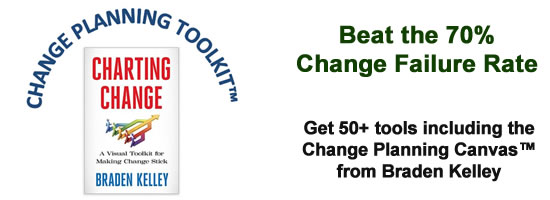6 Ways to Grow Your Curiosity

Holding a curious mindset is a great starting point when you’re leading your team or organization. If you’re in a truly new space, you won’t always know the answers. Your team won’t either. You’re going to venture into the unknown together. Curiosity is a great way to lead that charge.â€
–Tim Brown, IDEO CEO
Premise:
It is human tendency to look for answers or solutions, the moment a question or a challenge is posed. We feel good about having solved the problem. There is a rush of dopamine and that enforces this routine again.
However, if we are to solve complex challenges, we need to slow down and stay with the problem for some more time, however uncomfortable it gets. We need to explore and understand the problem better.
In my experience, usually the problem that you were trying to solve is never the real problem. There is always a much deeper issue that resulted in the problem, which was really a symptom of the underlying problem .
What this means is that as a leader, we need to step back or slow down and get curious to really understand & identify the real problem. So as a leader, how can you learn to do this when the default behavior is to go into problem solving mode. And how can you help your teams build this ability?
There are two questions here:
1. How can you resist the natural urge to get into problem solving mode? &
2. How can you instead go to a problem finding mode.
I think it all boils down to practice. Like any other skill, you can master this by engaging in deliberate practice. If you learn to be generally curious about stuff around you, you will then naturally start being curious about any problem that you might have to solve as well. As humans we are all inherently curious beings, but in the protected environments that we live in, we tend to forget our curiosity.
It starts with daily practices that allow us to seek and find inspiration everywhere—not just when we’re searching for it.
Here are some techniques we can use to increase our ability to stay curious:
1. Origin stories:
I have realized that thinking about and finding out the origin stories of everyday objects surrounding us has enabled me to get more and more curious. Origin stories can be interesting, inspiring, boring, funny or for that matter even sad.
Take for example the origin story of the potato chips that we so much enjoy. Did you know that in a restaurant in the US, there was a customer who complained that the French fries served to him were not crispy enough multiple times, so much so that it irritated the chef. The chef in turn decided to get back to the customer, and so cut the potato in the thinnest slice that he could manage, fried so much, that it became extremely crispy and to top it all, he put a generous serving of salt. Instead of getting irritated or angry, the customer really enjoyed the serving and hence was created potato chips. The chef was an african American and in those days, they were not allowed to patent anything. so, potato chips recipe was never patented.
Did you also know that these chips were still locally made and sold as their shelf live was very limited. Then someone (potato chips manufacturer) came up with an idea to hand press a butter sheet and put the chips inside and then again hand press the packet to seal the chips in. This kept the chips crispy long enough to start getting traction.
Then ask questions:
– Ask what if:
In this story, imagine what if the chef had been a good chef and instead of trying to get back at the customer, he had complied to the request. Would we still have potato chips? Maybe. Maybe not. What if the packaging puzzle was not solved? What if the chips recipe were patented? And if it were patented, how would have someone circumvented the patent?
These questions enable us to use our imagination to come up with situations and get curious and creative at the same time.
– Ask why:
In this story, try to imagine why the chef got so angry? Why did the customer so much like the very item that was designed to irritate and anger him? Why did he not send the chips back as soon as he saw that they were not the fries he had asked for? What kind of person would that make him? Why were African-Americans not allowed to own patents?
2. Get Contextual
The second habit that we can cultivate is to always get contextual first. All problems are problems in a specific context and the same thing can be a desirable thing in a different context. So, it is extremely important to understand the context in which we are observing the situation or the problem. We then look at the same problem with different context. In the case of potato chips, we can look at the situation from the view of the chef, the customer, the inventor of packaging, restaurant owner, etc.
Understanding the context then gives us the ability to find out if and how our solutions will work under similar contexts. What will happen if the context changes. Will our solutions still be relevant or needed in that situation. Is there a way that we can flip the context so that there is no need to solve the problem, as it no longer remains a problem?
3. Steal like an artist:
One of the things that we all know is that there are very few things in the world that are completely new. Everything else is either copied from elsewhere or inspired from something or a combination of different ideas coming together. What this means is that in order to come up with creative output, we need creative input. This means that we need to constantly look out for inspiration all around us. Inspiration is the fuel which keeps our curiosity going. Seek inspiration out by looking beyond obviously related contexts, fields, and networks, industries.
Make a notebook (physical or digital or phygital) where you collect interesting, weird and inspiring stories, actions, art or whatever). Share this with all your team mates. Go back to this notebook every time you feel stuck with something.
4. Adopt a beginner’s mindset
Just like all things in this world, Expertise and experience also have two faces. They are both important for progress and a hindrance to progress, depending on the situation. In certain situations, it is better to adopt a beginners mindset and look at Situation as a beginner would do. Even go out and bring someone to the room who is actually a beginner and who doesn’t understand the intricacies and the assumptions that we know as an expert in the area. Then encourage them to ask questions and try to understand the situation better.
I have found that such beginners have a way to bring to fore all the assumptions that we make as an expert to the front. Once we have them in the open, we can and need to question and validate these assumptions. This is the balance that we need to bring in to ensure that we are not under the curse of our own knowledge.
Consider the story of the Polaroid Instant Camera. The idea came when the inventors  four-year-old daughter asked one simple question:
Why do we have to wait for photos?
The quest to answer this question has resulted in a new way of capturing moments, that we are still experience, many decades later.
5. Frames
It has been known for a long time now that our Works in a specific way. It wants to frame everything in a way that makes it comprehend things faster, without having to use its compute power. We can use this to our advantage by learning to frame a given situation in many different ways. One of the ways to do this is to ask questions like “ How might we ….. “
We can also do this by abstraction. Every challenge or a situation can be abstracted by a certain degree. At every level of abstraction, the frame in which we are looking at the situation or the problem is different. Which means that the solution that we might come up at each stage of abstraction will also be different.
Even if this is done just as an exercise in thinking, we are better off doing this for every project and every challenge that we set out to solve or resolve. I have seen this process result in some very interesting and highly insightful discussions and solutions.
6. Use your body:
One of the things that I have experienced multiple times is that we tend to not use our bodies to experience the challenge or the situation. We are incredibly complex creatures and our bodies (and the emotions that go with the body) are incredibly smart. We can benefit from using our bodies to explore. It could be as simple as taking part in the situation or the problem in the role of a certain person, process or a tool. When we do this, we can inherently feel if it is right or wrong and if it is wrong, our intuition will also tell us where the problem seems to be. This is also a cheat sheet for us to become more empathetic
In conclusion:
I am sure that by spending a lot more time in the problem space, using your curiosity, there is a much better probability that you will identify the right problem with the chance that you might even eliminate the problem without even having to try to solve it.
Wait! Before you go…
Choose how you want the latest innovation content delivered to you:
- Daily — RSS Feed — Email — Twitter — Facebook — Linkedin Today
- Weekly — Email Newsletter — Free Magazine — Linkedin Group
 Mukesh Gupta is Director of Customer Advocacy, SAP India Private Limited. He also served as Executive Liaison for the SAP User group in India, and as a Global Lead in Sales & Business Development. He blogs, and shares podcasts and videos, on his site rmukeshgupta.com
Mukesh Gupta is Director of Customer Advocacy, SAP India Private Limited. He also served as Executive Liaison for the SAP User group in India, and as a Global Lead in Sales & Business Development. He blogs, and shares podcasts and videos, on his site rmukeshgupta.com
NEVER MISS ANOTHER NEWSLETTER!
LATEST BLOGS
Three things you didn’t know about credit cards
Photo by Ales Nesetril on Unsplash Many of us use credit cards regularly. From using them for everyday purchases to…
Read MoreFive CV skills of a business-minded individual
Photo by Scott Graham on Unsplash The skills listed on a CV help employers quickly understand your suitability for a…
Read More


